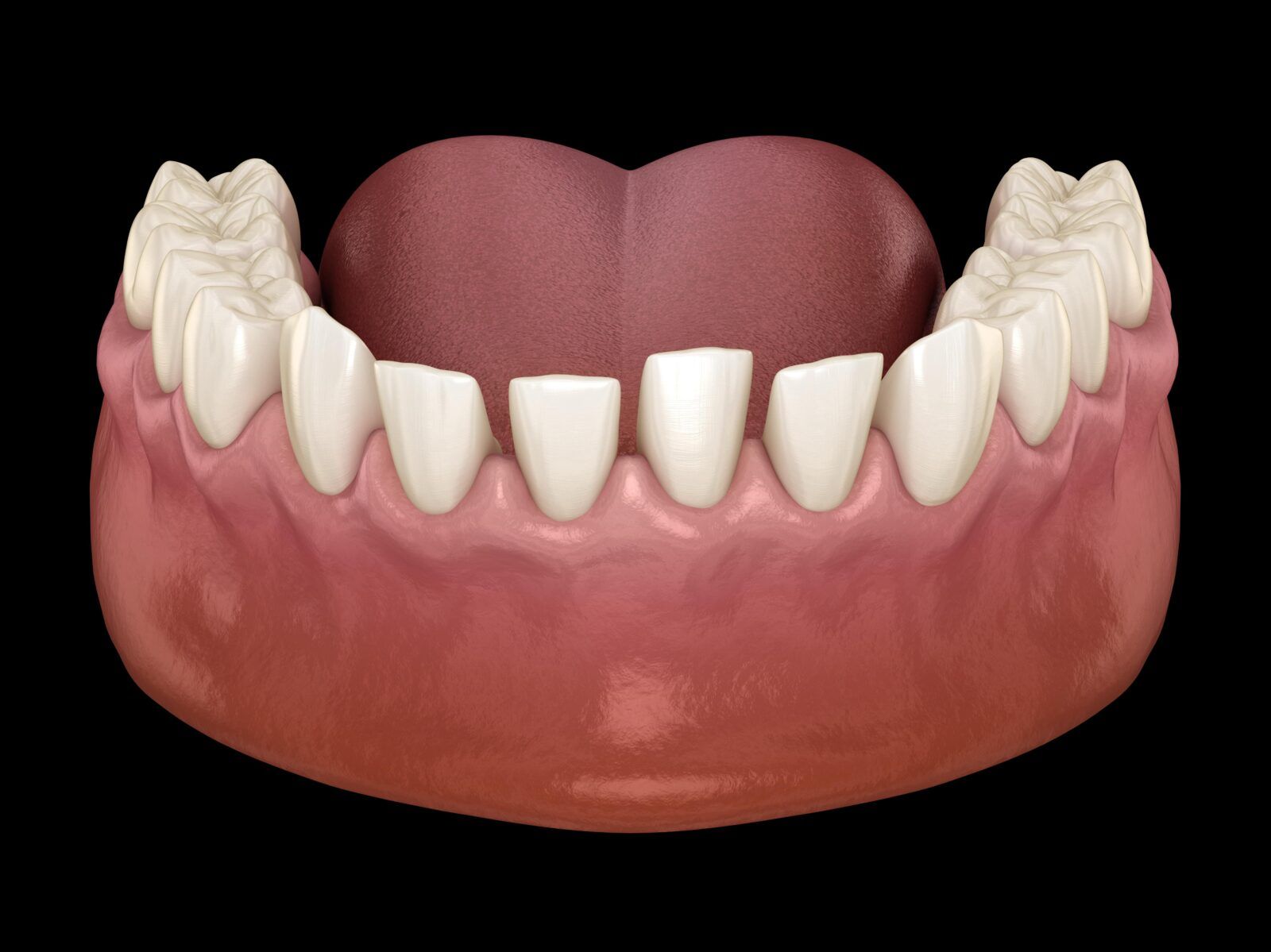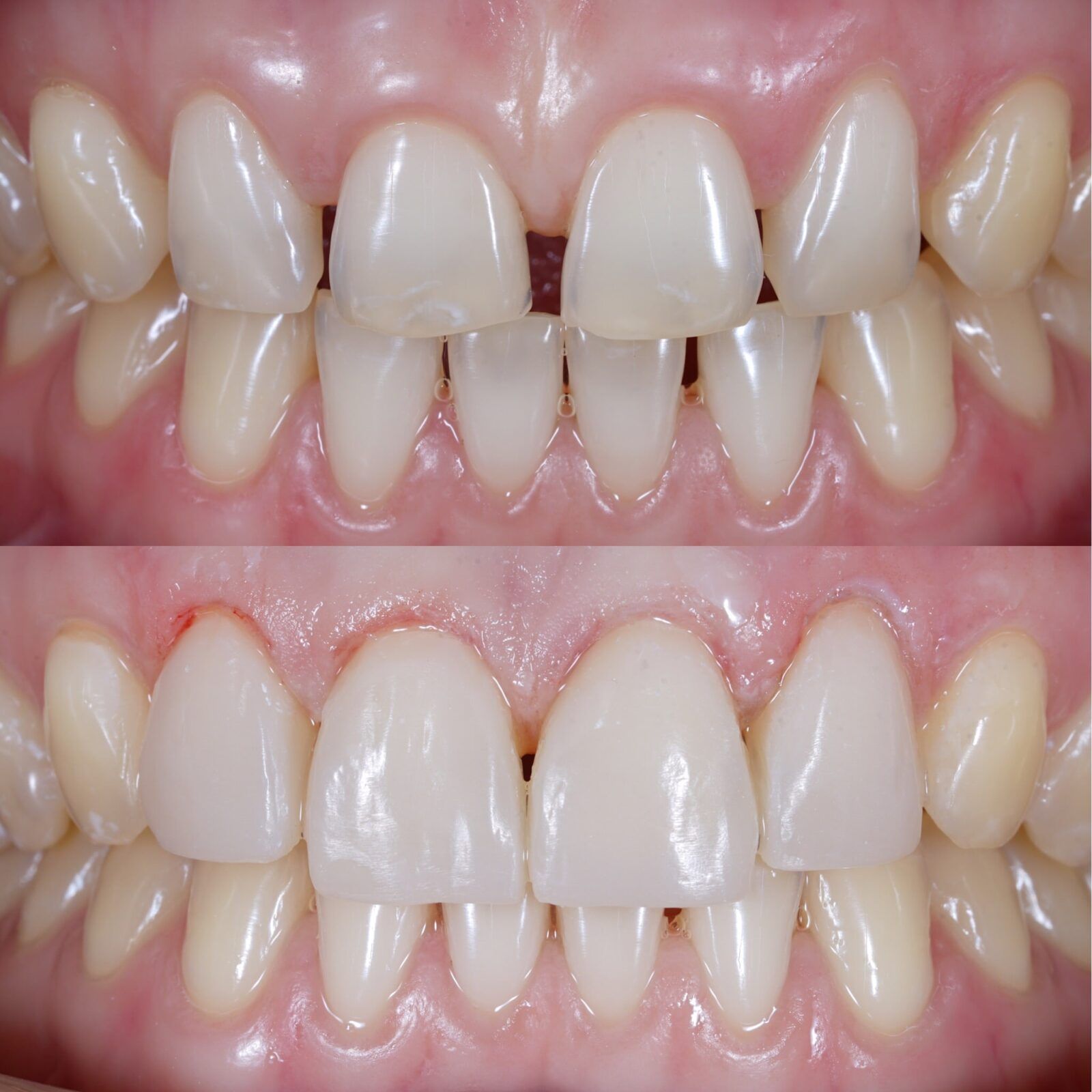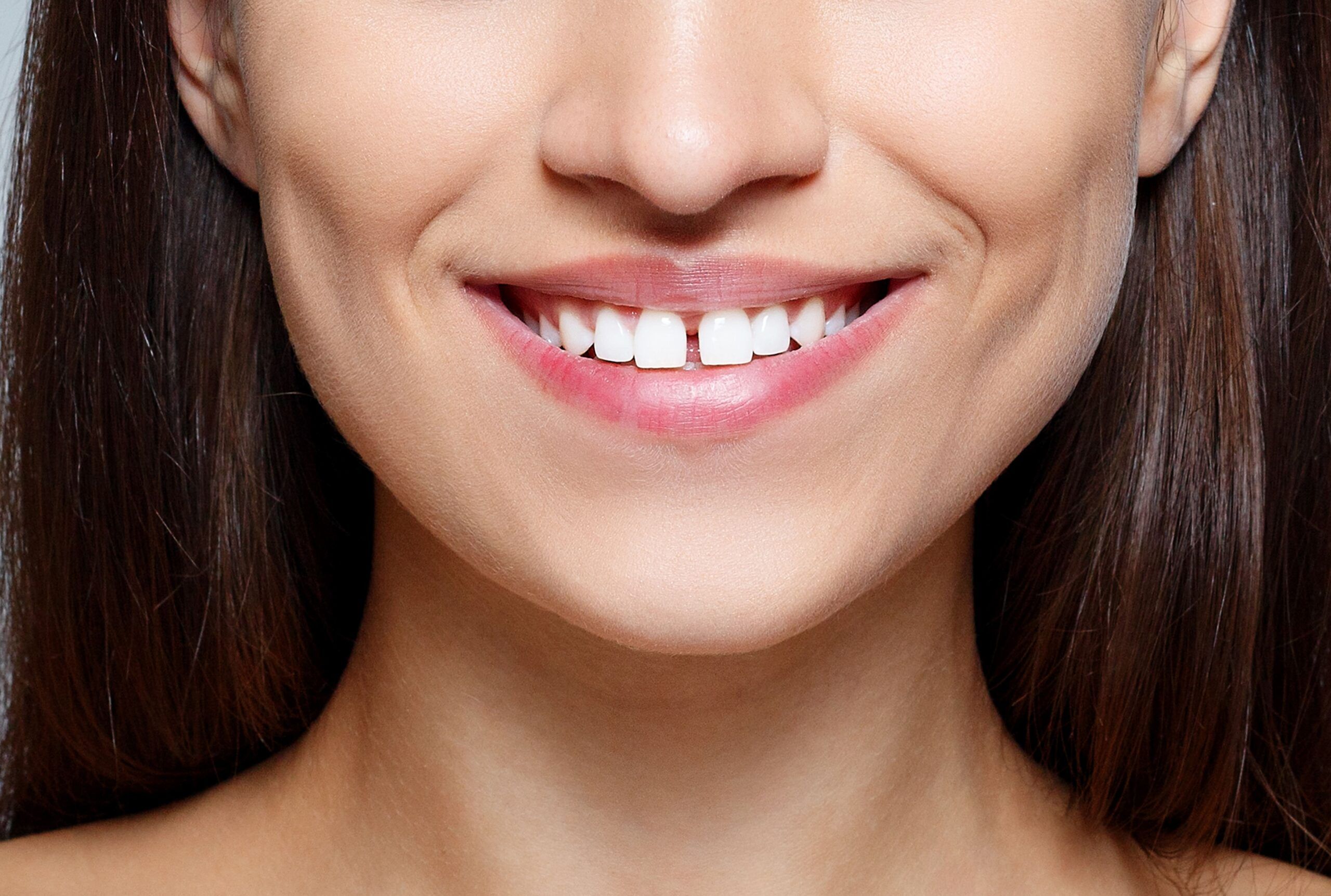Gaps between teeth, known medically as diastema, can range from barely noticeable to significantly wide and can appear between any two teeth. These spaces can create aesthetic concerns and, at times, lead to dental health issues. But what exactly causes these gaps, and how can they be treated? Let’s dive into the world of dental gaps to understand their origins and the cosmetic treatments available to bring teeth closer together.
The Causes of Dental Gaps
The most common gap is found between the upper front teeth and is often the result of several factors:

- Genetic Predisposition: Some people are born with spaces between their teeth as a part of their unique dental structure, inherited from their parents.
- Size Mismatch: Discrepancies between the size of the jaw bones and the teeth can lead to extra space, causing gaps to form.
- Oversized Labial Frenum: The labial frenum is the piece of tissue extending from the inside of your upper lip to the gum above your upper front teeth. If it’s too large, it can create a space.
- Gum Disease: Periodontal disease can lead to the loss of bone that supports the teeth, causing them to become loose and drift apart.
- Habits: Habits in childhood, such as thumb sucking or incorrect swallowing reflexes, can exert outward pressure on the teeth, creating gaps.
- Missing or Small Teeth: When teeth are smaller than average or when there are missing teeth, the remaining teeth may spread out and cause spacing issues.
Cosmetic Dental Treatments for Gaps
Fortunately, modern dentistry offers a number of solutions for closing gaps between teeth, enhancing smiles, and restoring function.
Dental Bonding
Dental bonding offers a simple yet effective solution for closing gaps between teeth. During the bonding process, a dentist applies a composite resin—matched to the color of the patient’s teeth—directly to the tooth’s surface. The resin is meticulously shaped and sculpted to fill in the spaces, seamlessly blending with the natural tooth contour to create a uniform look. Once the resin is applied, the dentist uses a special light to harden the material, which is then polished to achieve a smooth and natural appearance. This procedure does not typically require anesthesia and can be completed in one visit, making it an attractive option for patients seeking a quick cosmetic fix. Not only is dental bonding less invasive than some other dental procedures, but it is also cost-effective and can be a long-lasting solution to improve the smile’s aesthetic appeal without the need for more extensive orthodontic work.
Veneers

Veneers are a highly sought-after cosmetic solution for closing gaps between teeth, providing a balance of simplicity and transformation. They consist of thin, custom-made shells crafted from porcelain or composite resin that are designed to cover the front surface of teeth. To prepare for veneers, a dentist removes a small amount of enamel from the front and sides of the teeth to make room for the veneers, ensuring the overlay sits flush with the natural teeth. Once bonded in place, veneers mask the original appearance of the teeth, including any gaps, resulting in a new, gap-free smile. This option is particularly popular because it not only closes gaps but also enhances the overall shape, color, and alignment of teeth, offering a durable and long-term solution. Veneers resist stains better than resin bonding and reflect light similarly to natural dental enamel, making them a preferred option for a complete smile makeover.
Orthodontics
Invisalign is an innovative and discreet orthodontic treatment that corrects dental gaps using a series of clear, custom-fitted aligners. These aligners are made from a smooth, comfortable plastic that is virtually invisible when worn, allowing for an aesthetic treatment process. Unlike traditional braces, Invisalign trays are removable, which facilitates easier eating and cleaning. The treatment involves wearing a series of these aligners, each slightly different from the last, which gradually shift teeth into the desired position, effectively closing gaps. The process is planned using advanced 3D computer imaging technology, enabling patients to preview their final smile before starting treatment. Invisalign is suitable for treating a wide range of cases, from minor tooth movements to more complex bite issues, making it a versatile option for those looking to correct diastema without the hassle and appearance of metal braces. The duration of the treatment varies based on the individual’s needs but typically ranges from 6 to 18 months, with aligners changed every one to two weeks.
Dental Implants or Bridges
Dental implants and bridges are restorative options for closing gaps caused by one or more missing teeth. A dental implant is a comprehensive solution that replaces a missing tooth from root to crown. It involves inserting a titanium post into the jawbone to act as an artificial root, which is then topped with a crown that mimics the appearance and function of a natural tooth. This process not only fills the gap but also preserves the bone structure, preventing the shifting of adjacent teeth. A dental bridge, on the other hand, “bridges” the gap by anchoring a false tooth (or pontic) to crowns placed on either side of the space, using the adjacent teeth as support. This is an ideal option when the surrounding teeth are healthy enough to be crowned and can provide support for the bridge. Both implants and bridges offer long-term solutions and can be color-matched to the existing teeth, providing a natural-looking result that restores the full functionality of the mouth, including improved chewing and speaking, as well as maintaining the integrity of the facial structure.
Gum Surgery
Gum surgery, particularly a procedure known as a frenectomy, can be utilized to address gaps between teeth when the issue is due to the presence of an oversized labial frenum. The labial frenum is the strip of tissue that connects the lip to the gum, which, if too large, can push teeth apart, causing a gap. The frenectomy is a straightforward surgical procedure that removes or repositions this tissue to allow for the natural movement and potential closing of the space between teeth. This surgery is often performed when the gap is between the two upper front teeth and is sometimes accompanied by orthodontic treatment for optimal results. After a frenectomy, the space may close on its own as the teeth shift over time, or the newly aligned tissue can make subsequent orthodontic work more stable and successful. In children, the procedure can prevent gaps from forming as their permanent teeth emerge. Gum surgery can serve as a foundation for a healthier and more aesthetically pleasing smile, especially when diastema is present due to soft tissue influence.
Closing Thoughts
While gaps between teeth can be charming and a unique feature for some individuals, others may find them less desirable. The good news is that there is a wide range of cosmetic treatments available to address these spaces effectively. It’s important to consult with a dental professional to understand the underlying cause of the gap and to discuss the best treatment option for your specific needs.
Each treatment option has its pros and cons, and the choice often depends on factors like the size and cause of the gap, the patient’s oral health, and their aesthetic preferences. With the advances in dental technology and materials, those who wish to correct dental gaps can look forward to effective solutions that offer not just aesthetic benefits but also improvements in oral function and health.




